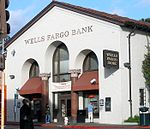Magnes Collection of Jewish Art and Life

The Magnes Collection of Jewish Art and Life, formerly known as the Judah L. Magnes Museum from 1961 until its reopening in 2012, is a museum of Jewish history, art, and culture in Berkeley, California. The museum, which was founded in 1961 by Seymour and Rebecca Fromer, is named for Jewish activist Rabbi Judah L. Magnes, a native of Oakland and co-founder of the Hebrew University of Jerusalem. The Magnes Collection of Jewish Art and Life houses more than 30,000 Jewish artifacts and manuscripts, which is the third largest collection of its kind in the United States.During the 2000s, negotiations were held to potentially merge the Judah L. Magnes Museum with what is now called the Contemporary Jewish Museum of San Francisco. However, the talks failed to produce an agreement to combine the two institutions.In 2010, the Judah L. Magnes Museum agreed to give its collection to the University of California, Berkeley, which will now display and preserve the museum's rare Jewish artifacts. As part of the agreement, the collection was moved from its location in an 8,600-square-foot house on Russell Street in Berkeley to a 25,000-square-foot building on Allston Way in downtown Berkeley. The Magnes Museum's board of directors had originally purchased the downtown building in 1997.The museum reopened in its new facility on January 22, 2012. In addition to the move, the name of the museum was changed to the Magnes Collection of Jewish Art and Life.
Excerpt from the Wikipedia article Magnes Collection of Jewish Art and Life (License: CC BY-SA 3.0, Authors, Images).Magnes Collection of Jewish Art and Life
Russell Street, Berkeley
Geographical coordinates (GPS) Address Nearby Places Show on map
Geographical coordinates (GPS)
| Latitude | Longitude |
|---|---|
| N 37.8592 ° | E -122.248 ° |
Address
Russell Street 2911
94168 Berkeley
California, United States
Open on Google Maps








